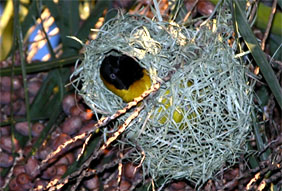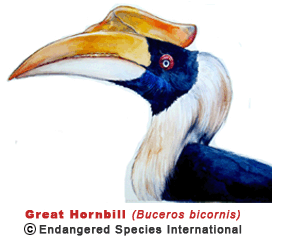|
All birds lay hard-shelled eggs, but beyond that the diversity of avian reproductive strategies is almost as diverse as are birds themselves. Some birds build elaborate nests, others lay their eggs on bare ground, and still others dig burrows or excavate cavities. Some breed in huge colonies while others are solitary nesters.
Mating systems range from lifelong or serial monogamy to obligate polygamy; polygamous systems may be polygynous or polyandrous. Many polygynous species form leks, communal display areas in which males perform elaborate “dances” to impress prospective mates. Other species’ males sing and/or dance alone, sometimes in flight, to attract females and advertise their territories.
Bird eggs vary widely in size, as do the birds that lay them. Ostriches, the largest living birds, lay the largest eggs. Kiwis, however, lay the largest eggs relative to their size; kiwi eggs make up 15-20% of the female’s body mass, are 65% yolk, and take 30 days to form.
In most species it is the female that incubates the egg(s) but in some it is the male; incubating birds develop brood patches, areas of bare, highly-vascularized, fluid-filled skin that facilitate heat transfer. Parental care may last over a year in some long-lived species with low reproductive rates; other species exhibit no parental care at all and most fall between these extremes.
Some interesting breeding strategies are listed below.
Cowbirds, Old World cuckoos, and some other groups are nest parasites. Females lay their eggs in the nests of other bird species and leave the incubation and rearing of the young to their unwitting hosts. In this way they are able to lay far more eggs than they could if they had to care for them themselves. Female hornbills enter tree cavities and molt most of their feathers. The males seal up the cavities with mud, leaving only a small opening through which they feed their mate while she incubates and broods the young, breaking out when they reach fledging age. Megapodes bury their eggs in mounds and use natural heat from solar radiation, vegetative decay, or volcanic steam to incubate their eggs. Some species regulate the temperature within the mound by adding or removing materials, creating vents, etc.
Young birds fall into two broad categories: altricial (poorly developed at hatching, naked, blind, and helpless) and precocial (well developed at hatching, downy and mobile, able to follow their parents). Songbirds, raptors, and gulls are examples of the former group; chickens, ducks, and shorebirds are among the latter. As one might expect, birds with precocial young tend to have the least significant nests. Precocial broods also tend to be larger as the young are able to feed themselves relatively quickly.
Continue on page 3
|
|

The southern masked-weaver (Ploceus velatus) inhabits the acacia scrub and woodlands of southern Africa. © Ken Burton


The North Island brown kiwi (Apteryx australis) lays large eggs relative to its size. © Paddy Ryan
|









